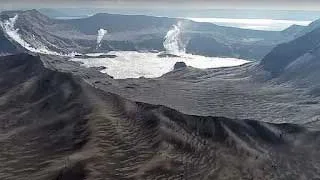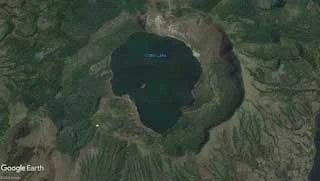The Regeneration of Taal Crater Island: Clues from the 1911 Eruption
Readers will only be too familiar with images of the Taal Volcano Crater Island having been reduced to a barren wasteland in the immediate aftermath of the 12 January 2020 eruption, in stark contrast to the lush vegetation that existed before. What is certain is that, given time, this vegetation will return.
To gain an idea how and how long, we turn to documentation on the immediate years after the 30 January 1911 eruption of the same volcano. A description of this eruption by botanist Frank C. Gates1, except for the loss of lives, sounds chillingly familiar.
“The latest eruption of Taal culminated on January 30, 1911, and resulted in the entire destruction of the villages on the island as well as some of those on the mainland, with a loss of about 1,400 lives. Ashes, pumice2, small stones, and acid vapors were thrown across the lake to the mainland… the ground was entirely denuded of vegetation, virtually all of which was completely destroyed.”
Gates noted that “no vegetation appeared during the dry season immediately after the eruption.” Because the 2020 eruption occurred in January as well, we can probably expect this to be the case in the next few months. Gates also noted that for revegetation to occur, the excess of acids deposited upon the soil by the last eruption had to be leached or drained away first. Thus, the rainy season of 1911 was crucial in accomplishing this.
The rainy season having come, typically late May or early June, there were tentative signs of vegetative life returning, particularly in the “protected parts of the northeastern and northwestern areas” of the crater island. Gates wrote that a “few stumps sprouted and various seeds grew, producing a heterogeneous mixture in which tree species soon became dominant.”
The return of vegetation would not, however, happen in earnest until the rainy season of the following year, 1912. In the northern- and southernmost parts of the island, a flowering vine3 called “balim-balim4” in Tagalog as well as a legume with the scientific name canavalia lineata5 started to appear.
Grass also started to grow and invade aggressively over wide areas, “rapidly became established and spread in all directions.” Soon followed trees and shrubs, which started appearing in “isolated spots and spread rapidly both with and into the grass.” These were brought to the island by birds.
By October, banana plants were observed in Pirapiraso and Binintiang Malaki. Bamboo had also started to reappear. By December of the following year, 1913, vegetation had become
“…well established on the northern side of the island to an altitude of about 175 meters. It consisted largely of grass – entirely dense at lower altitudes, but thinning and opening out above – parang6, and trees. Over most of the vegetated areas parang was at least incipiently present, but in the northeastern and the northwestern regions it was best developed and had already driven out a considerable amount of grass. At this time, there were no plants within the crater and but one very small patch at a place on the rim.”
Four months later, in April of 1914, “great strides were visible in the vegetation.” Most of the island excepting the top of the ridges had become vegetated with grass and an increasing number of bushes and trees. Grass has also started to invade the crater itself. Bamboo and banana plants had become more abundant.
Gates would forecast that the recovery of vegetation “will go on, faster on the northern than on the southern sides, until the slopes are covered with vegetation, characteristically by trees and shrubs on the sides of ridges, while the crest is more likely to be occupied with grass, at least for some time to come, although ultimately even the crests should became forested.”
To conclude, while at present the Taal Volcano Main Crater Island may look extremely desolate, we know from documentation of the volcano’s previous eruptions that vegetation on the island will regenerate itself in as short as three years.
If the pattern remains the same as that of the 1911 eruption, then we know that there will be little vegetative regeneration in the next few months, and that the arrival of the rainy season will be crucial in washing and draining away unwanted chemicals from the soil.
Next year’s rainy season, however, will be a different story, when vegetation returns in earnest and continues growing in the years to come. Unless, of course and God forbid, another eruption occurs.
2 Pumice is commonly a very light volcanic rock high in silica content and low in iron and magnesium. “Pumice,” online at the Mineral Database.
3 “Ipomoea pes-caprae,” Wikipedia.
4 “Ipomoea pes-caprae (PROSEA),” by Anna L.H. Dibiyantoro and G. H. Schemlzer, online at Plant Use.
5 “Canavalia,” Wikipedia.
6 “Parang” referred to a bush or a thicket.


